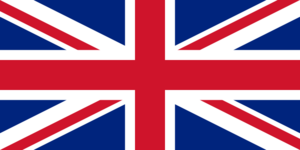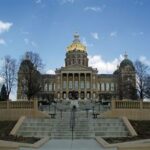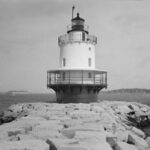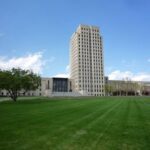People have inhabited what is now the modern-day London since Romans times. In 43 A.D, the Romans invaded England and later constructed a bridge on the Thames, a major river that runs through the city of London. Roman merchants constructed a town near the bridge in 50 A.D., thus creating Londonium, named after the Celtic word Londinios, meaning the place of the bold one.
Several centuries later, however, by 407, Roman soldiers had left London. Thus, a walled town with a population of about 45,000 during the time of the Romans, eventually came to have few people remaining inside its walls. Later, about 10,000 people came to live outside the walls. It was during this time that London became a Saxon town. The Saxons were a Germanic tribe from North West Germany. Getting their name from the short swords, or sahs, which they used in fighting, there were called upon by the rulers of Britain to fight against the Picts, a people invading from the north. The Saxons eventually settled in England and began to be converted to Catholicism by Roman monks, who started arriving in the late 500’s. In 842, Danes looted the city and later burned it. Alfred the Great ultimately overcame the Danes and took London.
In 1066, the Normans, a people descended from the Norsemen who invaded and settled in northern France, took London with William the Conqueror being made king at Westminster Abbey. Under Norman rule, certain rights were given to Londoners. Although at this time, London was also watched over by a guard tower, the White Tower. This edifice was the start of the Tower of London. About this time London had about 18,000 inhabitants. During the Middle Ages, London was been described as a “lively,” wealthy and important city, with lots of ships coming to and from London. Its main export was wool. Life in England was not happy for everyone, however, due to religious intolerance. Jewish people persecution in France came to live in a segregated part of the city. Following violent unrest, however, they ultimately were removed from England altogether in 1290. The separation of England from the Catholic Church by Henry VIII as well as persecution of Protestants by Mary, Queen of Scots resulted in anti-Catholic sentiment in England during the 1500 and 1600’s. Around this same time, however, other people from various parts of Europe were able to settle in London. For instance, French Protestants persecuted in their native land settled in what would come to be the London suburb of Spitalfields and worked as silk weavers.
In the 1700’s London continued to be an important city. It had many different trades, not just established trade of wool making. Silk weavers continued to be in Spitalfields. There were also watchmakers and furniture makers in Clerkenwell and Long acres, respectively. Other trades performed in London included leather tanning, jewelry making, and ship building, among others. Additionally, most of the items exported from and imported into England came through London.
In the 1800’s London experienced more growth. The city expanded into other areas like Peckham and Camberwell, as well as East and West Ham. Such expansion was largely a result of the railroad being constructed, allowing people to commute from home to work. During this time, other technology and institutions began to become established in the city. The first underground railway was built in 1863. The Victoria and Albert museums, the Natural history museum and the Science Museum all opened in the later half of the nineteenth century. London continued its importance as a major port city as well during this time.
The 20th century would see the decline of London as a major port city, however. Since the 16th centurys, England had been involved in empire building. The phrase, “The sun never sets on the English empire,” illustrated the fact that the lands England controlled stretched around the globe. By the middle of the 20th century, however, revolts against English rule, its decreased wealth after WWII, and opposition to colonialism by the British public, decreased England’s empire and the ship industry of London as well.
In the later half of the 20th century, London continued to change. The movement of industries by the London government to decrease congestion, lead to high unemployment. The population had increased as well. London now had several million inhabitants. The population also became more diverse as people from former colonies like those in Africa and Asia came to live in England, a reality sparking race riots. In more recent times, laws have sought to decrease racial tensions, and there have been victories in this regard. However, attacks in London by Islamic terrorists, have produced an increased anti-Islamic sentiment.
London continues to be an international city. In 2012, it hosts the Summer Olympic Games and continues to be a major tourist destination. The riots of August 2011, however, demonstrate that it is not immune from unrest-although the general cause of these riots, which seem to cut across racial and class lines, remains unclear.
References:
http://www.localhistories.org/london.html
http://branmyson.com/history_papers/saxon_paper.php
http://www.albion-swords.com/articles/norman.htm
http://www.hrp.org.uk/TowerOfLondon/sightsandstories/buildinghistory/normanbeginnings.aspx
http://www.splcenter.org/get-informed/intelligence-report/browse-all-issues/2006/winter/united-kingdom
http://www.bbc.co.uk/news/uk-england-london-14450248
http://www.thelatinlibrary.com/imperialism/notes/britishempire.html
http://www.paltelegraph.com/world/uk-news/9782-violence-breaks-out-in-london-towns-of-hackney-peckham-a-lewisham.html
http://www.moyak.com/papers/popish-plot-england.html








